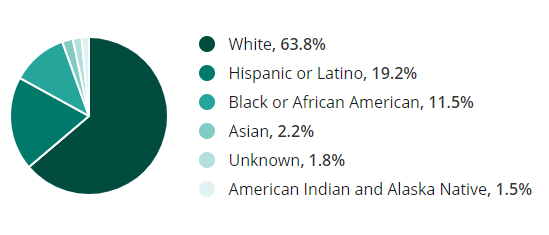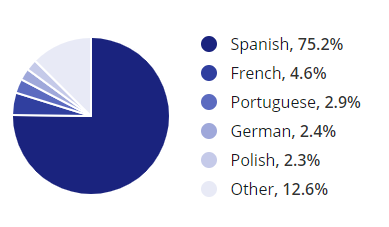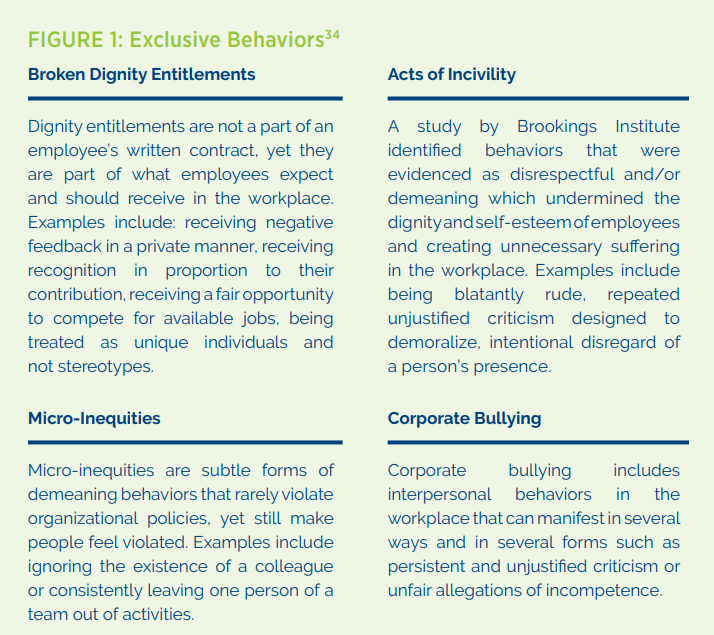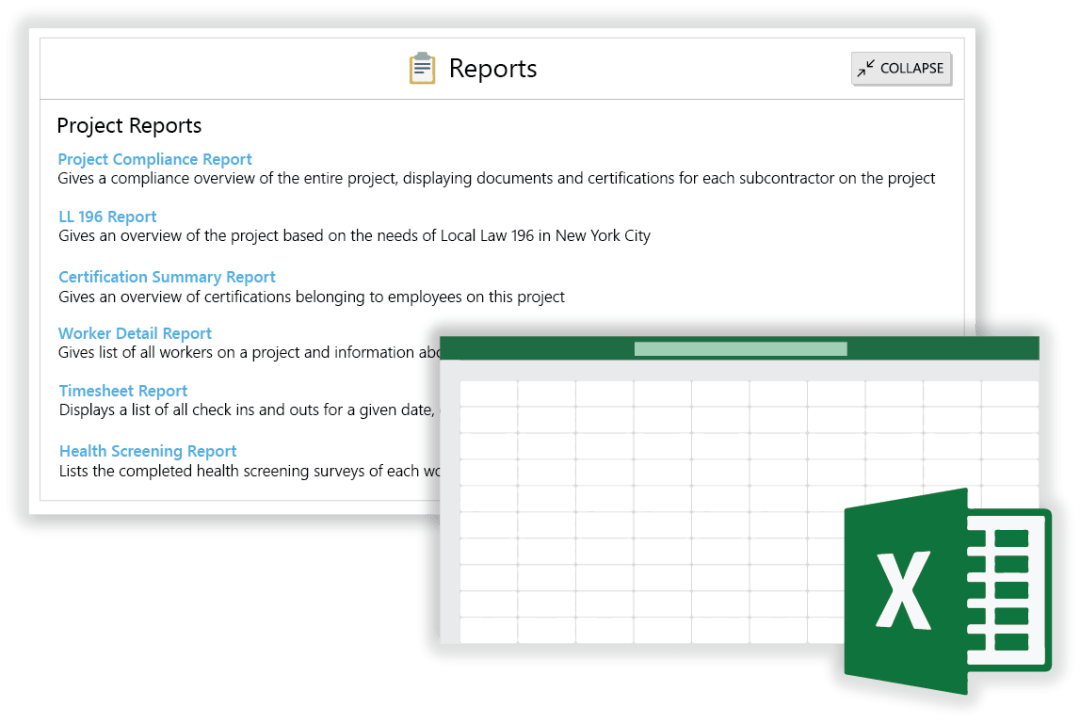Do you have a diverse construction workforce? Do you track workforce demographic data on your employees? Do you know all the benefits to tracking construction workforce demographics?
With unemployment levels in the construction sector reaching all-time lows, the skilled labor gap has responded by growing to record heights. Leading contractors are left scrapping for the top talent in their respective disciplines. A by-product of this labor shortage has been the induction of more minority workers to the industry. Though greater workforce diversity has its challenges, there are also many benefits to be had for contractors willing to embrace greater diversity.
This blog will explore key construction workforce demographic data, the benefits to contractors who have a more diverse workforce, and software systems that can help you track and report on demographic data.
Table of Contents
Construction Workforce Demographics in the United States
Construction Workforce Demographics by Race
Languages Spoken by Construction Workers
Construction Worker Educational Levels
How General Contractors Can Benefit from a More Diverse Workforce
1. Greater Profitability
2. Improved Site Safety Culture
3. Less Turnover
4. Enhanced Productivity
5. More Innovation
Why Report Demographic and Ethnic Data?
The American Rescue Plan Act of 2021
Minority & Diversity Certification Programs
Tracking Construction Workforce Demographics with myComply
Construction Workforce Demographics in the United States
The construction sector is one of the greatest economic drivers in the United States. In fact, the construction industry employed 808,891 people at the end of the 2020 calendar year. The average age of those workers was determined to be 38.7, comprised of 88% male workers, 8% female, and the rest undeclared. The average annual salary was found to be $24,802, working out to $11.92 an hour.
Workers also span several ethnic backgrounds, speak several languages, and have varying levels of education. Here are some of the specifics.
Construction Workforce Demographics by Race
Most of the construction sector continues to be occupied by Caucasian workers, with 63.8% of workers identifying as “White.” The next largest share is held by workers who identified as “Hispanic or Latino,” with those identifying as “Black or African American,” following closely behind.
Source: Zippia
Interestingly, there has been little change in this demographic distribution over the past decade, with only a few percentage points in variance being measured.
Source: Zippia
Languages Spoken by Construction Workers
Based on the distribution in construction ethnicities, it stands to reason that there would also be several different languages spoken by construction workers in the United States. In fact, a study by Forbes determined that 67% of US employers believe that they were incurring operational inefficiencies as the result of language barriers. Here is the distribution of languages spoken in construction, other than English.
Source: Zippia
This can be problematic for General Contractors (GCs), Construction Managers (CMs), and those that oversee construction projects, as clear communication can be a matter of life or death on a construction site.
Construction Worker Educational Levels
Construction workers display varying levels of education across the US. The most held level of education is a High School Diploma. The next largest category is that of “Other Degrees,” which also includes workers that have not completed any formal Diploma or education program.
Source: Zippia
How General Contractors Can Benefit from a More Diverse Workforce
Promoting diversity and inclusion at your construction company is not just a good PR tactic, a more diverse workforce has been proven to make construction sites safer, reduce employee turnover, improve productivity, drive innovation, and enhance profitability. Find out more below.
1. Greater Profitability
Across a breadth of research studies, more ethnically and gender diverse construction workforces have been proven to drive greater profitability and most of the metrics that contribute to profitability.
A study by the Massachusetts Institute of Technology (MIT) determined that gender diverse companies report, on average, 41% greater revenue over their fiscal years, as opposed to those that are less diverse. A McKinsey study on the same topic found that companies in the top quartile for gender diversity are 21% more likely to have above-average financial returns in their respective industries.
Additionally, a Deloitte study sought to understand the impact of ethnically diverse workforces on profitability. The report determined that ethnically diverse companies had 2.3x greater cash flow per employee as opposed to non-diverse counterparts.
Diversity is a key metric with respect to profitability because diverse teams tend to be more creative, harder working, and prone to greater variance in viewpoints, which leads to more productive conversation and better performing practices.
2. Improved Site Safety Culture
According to the Occupational Safety & Health Administration (OSHA), a worker is injured on a construction site every 18 seconds. Furthermore, studies have suggested that the total cost of these fatal and nonfatal injuries is $13 billion annually. With these numbers, it is no surprise that safety is of paramount concern in the construction sector.
Safety culture in construction can be described as the combination of attitudes, beliefs, opinions, and actions that are shared and demonstrated on a construction site. Safety culture starts at the top with the level of precedent that project owners, GCs, and CMs implore upon workers. However, safety culture is practiced, maintained, and protected by every worker that enters the jobsite.
One of the greatest threats to a strong safety culture is the lack of company-wide inclusion and communication on the initiative. Exclusionary behavior can be described simply as any behaviors that make an employee or colleague feel like they do not belong-to or are not involved with the group.
Here is a breakdown of the different types of exclusive behavior:
Source: AGC Report on Biz Case
By promoting an open and inclusive work environment, employers can better learn and understand cultural differences in how workplace threats and dangers are responded to, which leads to the development of stronger and more effective safety strategies.
3. Less Turnover
Turnover is an undesirable, yet unavoidable reality in all industries. Companies should be taking all steps at their avail to minimize employee loss. That’s because:
- Every employee loss costs construction companies, on average, 21% of their annual salary. Based on national averages, that figure amounts to $12,351.
- 33% of construction workers spend less than one year at a job, contributing to a dangerously large turnover rate.
Source: Zippia
The stakes are high for construction companies that are looking to retain top talent and safeguard their bottom line. One of the leading causes of these turnover rates in the construction sector is a lack of perceived inclusion. In fact, 65% of construction workers that experienced exclusionary behavior in the workplace said that they would leave their jobs, or seriously consider doing so, if another opportunity presented itself.
Furthermore, there is a skilled labor shortage in the construction sector, with 80% of companies reporting difficulty filling craft worker positions, and 56% reporting difficulty filling salaried positions. With such demand and limited supply, a Glassdoor study sought to understand what workers are looking for in an employer, and they found that 67% of job seekers in the construction space rate diversity and inclusivity highly when evaluating companies and offers.
Therefore, promoting a safe and inclusive workspace can bode well for contractors that are looking to attract and retain top industry talent.
4. Enhanced Productivity
With razor thin margins, construction firms and contractors cannot afford any productivity losses, especially ones that can be easily mitigated. Unfortunately, the effects of exclusive behavior in the workplace are not only seen in employee turnover, but they also feed into worker motivation and productivity.
The impacts of exclusive behavior cannot be understated. In fact, a study by the University of Houston found that for each instance of exclusive behavior, a worker loses 17.2 paid hours of productivity. Furthermore, 71% of workers studied cited four or more exposures to exclusionary activities over the course of a year. Based on the average salary of a construction worker in the US, and a company with 100 employees, this productivity loss would amount to $137,660 per year.
5. More Innovation
Diversity breeds innovation. Greater diversity of beliefs, ideas, and opinions leads to more original answers to complex problems, and construction projects are riddled with unique challenges and opportunities to innovate.
However, like safety, diversity and inclusivity are values that need to be driven from the top-down. According to a study by the Center for Talent Innovation, employees are 75% more likely to see their ideas make it to the marketplace if their leaders have both acquired and/or inherent diversity traits. Furthermore, a study by Deloitte determined that when employees think their company is committed to diversity, they feel more included and that leads to an 83% improvement in their ability to innovate.
The equation is simple:
More diversity = greater innovation = better results = more profit
Why Report Demographic and Ethnic Data?
Though demographic reporting is not yet mandated by any state authority, there are a number of undeniable benefits to having and documenting the diversity of your workforce, whether you’re a general contractor or subcontractor.
The American Rescue Plan Act of 2021
For instance, the most recent $1.9T COVID-19 relief package, known as the American Rescue Plan Act of 2021, includes billions of dollars for capital projects. However, much of this project-based funding will be allocated according to certain demographic factors, such as rural population density, lower-income regions, and demonstrated diversity.
Minority & Diversity Certification Programs
Additionally, many states have minority and gender geared programs that help more diverse companies access work and grow their business. For example, the City of New York Minority and Women-Owned Business Enterprises (M/WBE) Program gives diverse businesses access to the NYC Directory of Certified Businesses, a directory which provides free business promotion. Additional membership benefits include access to networking events, customized courses, and targeted consultations.
These benefits are only available to State businesses that are at least 51% owned, operate, or controlled by a US citizen that identifies as one of the following:
- Black,
- Hispanic,
- Asian-Pacific,
- Asian-Indian,
- or Native American
—
Other organizations across the US provide similar supports to businesses that are owned by diverse groups or have diverse workforces. Research opportunities in your state to find out more.
Bottom line? Diversity pays.
Tracking Construction Workforce Demographics with myComply
As we look to the future of the US construction landscape, it is quite easy to see that exclusion is the enemy of progress, and that contractors who actively seek and build diverse teams will reap the benefits of:
- Greater jobsite safety
- Less turnover
- Enhanced productivity
- More innovation
- And greater profitability
These companies will also open the doors to funding opportunities, diversity certification groups, and more. However, documenting diversity can be a challenge for larger construction companies. Many may not have any official record of ethnic information on their employees or might not have it accurately documented in an easily accessible location.
myComply makes it easy to document construction workforce demographics. Company Certification Manager is a subcontractor-geared platform that enables specialized contractors to setup employee profiles where a variety of information can be tracked, including key ethnic/demographic information as well as worker certifications and qualifications that may be needed to conduct work on project sites.
myComply also has a robust Projects Pro system that is engineered for general contractors. This hardware-software combination allows GCs to take their reporting to the next level by integrating worker profiles with near-field communication (NFC) badges that can be used as access cards on turnstiles, door strikes, or other points of entry on construction sites.
This also enables GCs to accurately track a variety of site data in real-time. For example, GCs can monitor and compare time and attendance data to verify subtrade billing, report on live demographic breakdowns, or view the subtrades and workers on-site at any given time.











